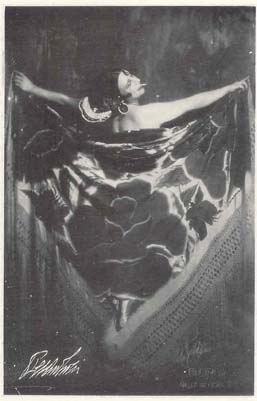PAINEL
33
1. HARICLEE DARCLEE no papel-título da ópera TOSCA, de Puccini.
Teatro Costanzi de Roma, 1900.
2. LUCIENNE BREVAL como Brunnhilde em A Valquiria, de Wagner. Fot. Bary.
3. EVA TETRAZZINI CAMPANINI (1862-1938) como Desdemona em Otello, de Verdi.
4. GERALDINE FARRAR como Elisabeth em T nnhauser, de Wagner. Fot.Reutlinger
(1907).
5. GERALDINE FARRAR como Violetta Valery em La Traviata, de Verdi.
6. MARY GARDEN como Melisande em Pelleas et Melisande, de Debussy. Opera-Comique,
1902.
7. MARY GARDEN como Ofelia em Hamlet, de Ambroise thomas. Fot. Boyer &
Bert, Paris (1908)
8. A soprano francesa ROSE CARON (1857-1930) no papel-título da
ópera Salammbo, de Reyer. Fot.Reutlinger, Paris.
9. O barítono francês MAURICE RENAUD (1861-1933) no papel-título
da ópera Don Giovanni, de Mozart. Fot. Paul Berger, Paris.
10. EMMA CARELLI no papel-título da ópera Iris, de Mascagne.
11. ENRICO CARUSO como DICK JOHNSON em La Fanciulla del West, e Puccini.
Fot. A . Bert. Paris(1912).
12. A soprana francesa MARTHE CHENAL (1881-1947) como Zoraya em la Sorciere,
de Erlanger. Fot. A . Bert. Paris (1912).
13. GABRIELLA BESANZONI no papel-título da ópera Carmen,
de Bizet.
14. O barítono alemão EDUARD HABICHI (1880-1960) como Alberich
em O ouro do Reno, de Wagner. Bayreuth (circa 1929).
15. O tenor alemão ERICH ZIMMERMANN (1892-1968) como Mine em O
Ouro do Reno, de Wagner, Bayreuth (Circa 1929).

13